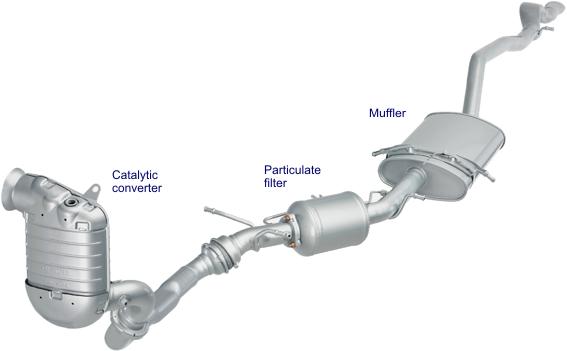Truck exhaust systems are often overlooked until something goes wrong—but they play a vital role in the safe, efficient, and legal operation of any truck. Whether you’re running a long-haul rig or managing a local delivery fleet, understanding the purpose of your truck’s exhaust system helps you maintain peak performance while meeting environmental and safety standards.
Introduction to Truck Exhaust Systems
A truck exhaust system is a network of components designed to guide harmful gases away from the engine, reduce noise, and control emissions. While it’s easy to assume it’s just a pipe that vents smoke out the back, the reality is far more complex. Each component contributes to protecting both the truck and the people around it.
Key Functions of a Truck Exhaust System
Directing Harmful Gases Away from the Engine and Cabin
One of the primary roles of the exhaust system is to remove engine combustion gases, such as carbon monoxide and nitrogen oxides, safely away from the vehicle. Without this, dangerous fumes could leak into the cabin, posing a serious health risk to the driver.
Reducing Engine Noise
The muffler and resonator work together to reduce the sound produced during combustion. This not only prevents noise pollution but also creates a more comfortable driving experience, especially for long-distance hauls or city-based deliveries.
Controlling Emissions and Environmental Impact
Modern exhaust systems include components like catalytic converters and Diesel Particulate Filters (DPFs), which reduce the amount of pollutants released into the air. These systems are critical for meeting Australian Design Rules (ADR) related to vehicle emissions and ensuring environmental compliance.
Enhancing Engine Efficiency and Performance
A properly functioning exhaust system allows exhaust gases to exit the engine smoothly, reducing back pressure and improving airflow. This can positively impact fuel economy, throttle response, and overall engine performance. For those looking to improve or replace existing components, a wide selection of truck exhaust and accessories is available to suit various makes and models.
Components of a Truck Exhaust System
Truck exhaust systems are made up of several key parts, each serving a specific role:
- Exhaust Manifold – collects exhaust gases from the engine’s cylinders.
- Catalytic Converter – reduces harmful emissions by converting pollutants into less toxic gases.
- Diesel Particulate Filter (DPF) – captures and stores soot from diesel engines to prevent black smoke emissions.
- Muffler – dampens the noise produced by exhaust gases.
- Tailpipe or Exhaust Tip – the final exit point for gases, often customised for style or clearance.
Signs Your Exhaust System May Need Attention
It’s important to recognise when something isn’t right. Common symptoms of exhaust system issues include:
- Loud or unusual engine noises
- Reduced fuel efficiency
- Rusted or visibly damaged components
- Exhaust fumes entering the cabin
- Black smoke or a strong exhaust smell
Any of these signs should prompt an immediate inspection or service.
Maintenance Tips for Longevity and Performance
To keep your exhaust system in top shape:
- Inspect it regularly for leaks, rust, or loose connections
- Replace gaskets, hangers, and clamps as they wear out
- Avoid short trips that don’t allow the system to heat up fully (which helps burn off condensation)
- Opt for stainless steel or corrosion-resistant parts to prevent premature rusting
Routine maintenance not only extends the life of the system but also helps prevent costly repairs down the road.
In Summary
The truck exhaust system is far more than a pipe running under your vehicle—it’s a complex, essential system that contributes to your truck’s safety, environmental compliance, and performance. Whether you’re upgrading components or maintaining existing ones, paying attention to your exhaust setup is a smart move that pays off in the long term.

